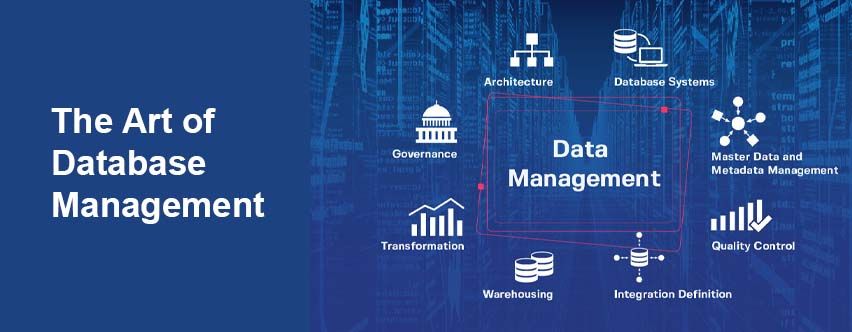In today’s data-driven world, effective database management is crucial for businesses and organizations of all sizes. Whether you are a small startup or a large enterprise, your success depends on how well you can organize, store, and retrieve your data. This guide will delve into the world of database management, providing you with essential insights, best practices, and a comparison between different database management systems (DBMS).
Table of Contents
What is Database Management?
Database management, often abbreviated as DBM or DBMS (Database Management System), is the process of efficiently storing, organizing, and manipulating data within a database. Databases are like digital warehouses, holding vast amounts of structured and unstructured data that can range from customer information to product inventory and much more.
Optimized Keyword: Database Management
Effective database management involves several key elements:
- Data Storage: Databases store data in a structured format, making it easier to manage and retrieve when needed.
- Data Retrieval: Users can query the database to retrieve specific information, ensuring quick access to relevant data.
- Data Security: Protecting data from unauthorized access and ensuring data integrity is paramount.
- Data Backup and Recovery: Regular backups are essential to prevent data loss and recover information in case of system failures.
- Data Optimization: Optimizing the database for performance is crucial to ensure efficient data processing.
Comparison Table: Popular DBMS
To help you better understand the world of database management, let’s compare three popular Database Management Systems: MySQL, PostgreSQL, and MongoDB.
| DBMS | Type | Language | Open Source | Scalability | ACID Compliant |
|---|---|---|---|---|---|
| MySQL | Relational | SQL | Yes | High | Yes |
| PostgreSQL | Relational | SQL | Yes | High | Yes |
| MongoDB | NoSQL | BSON (JSON) | Yes | High | No |
MySQL:
- Type: Relational
- Language: SQL
- Open Source: Yes
- Scalability: High
- ACID Compliant: Yes
PostgreSQL:
- Type: Relational
- Language: SQL
- Open Source: Yes
- Scalability: High
- ACID Compliant: Yes
MongoDB:
- Type: NoSQL
- Language: BSON (JSON)
- Open Source: Yes
- Scalability: High
- ACID Compliant: No
Stats: Database Management Impact
Database management plays a pivotal role in modern business operations. Here are some statistics that highlight its importance:
- Data Growth: According to IDC, the global data sphere will reach 175 zettabytes by 2025, emphasizing the need for efficient database management.
- Data Breaches: In 2020, the average cost of a data breach was $3.86 million (IBM). Proper database security is essential to mitigate such risks.
- eCommerce: A well-managed database can improve eCommerce conversion rates by 30% (KPMG).
- Mobile Apps: Mobile app crashes due to database issues can lead to a 50% uninstall rate (DZone).
- Cloud Adoption: By 2022, 75% of all databases will be deployed or migrated to the cloud (Gartner).
FAQs: Your Database Management Questions Answered
Q1: What is the difference between SQL and NoSQL databases? A1: SQL databases are relational and use structured query language for data manipulation, while NoSQL databases are non-relational and can handle unstructured or semi-structured data.
Q2: Is open-source database management software reliable? A2: Yes, many open-source DBMS options like MySQL, PostgreSQL, and MongoDB are highly reliable and widely used in the industry.
Q3: How do I choose the right DBMS for my business? A3: Consider factors like data structure, scalability needs, and project requirements. If you require strict data integrity and structured data, choose a relational DBMS like MySQL or PostgreSQL. For flexible data models and scalability, opt for a NoSQL solution like MongoDB.
Q4: How often should I back up my database? A4: Regular backups depend on your data change rate, but a daily backup is a common starting point. Critical systems may require more frequent backups.
Q5: What security measures should I take to protect my database? A5: Implement access controls, encryption, and regular security audits. Keep your DBMS software up to date to patch vulnerabilities.
Conclusion
Database management is the backbone of modern businesses. Choosing the right Database Management System, securing your data, and optimizing performance are essential steps to ensure that your organization can thrive in the data-driven era. As data continues to grow, the art of database management will remain an integral part of business success.
In this guide, we’ve covered the basics of database management, compared popular DBMS options, shared important statistics, and answered common questions. Armed with this knowledge, you can make informed decisions to manage your data effectively and drive your business forward in today’s competitive landscape.
Remember, effective database management is an ongoing process. Stay updated with the latest trends and technologies to ensure your database remains a valuable asset for your organization.


Leave a Reply